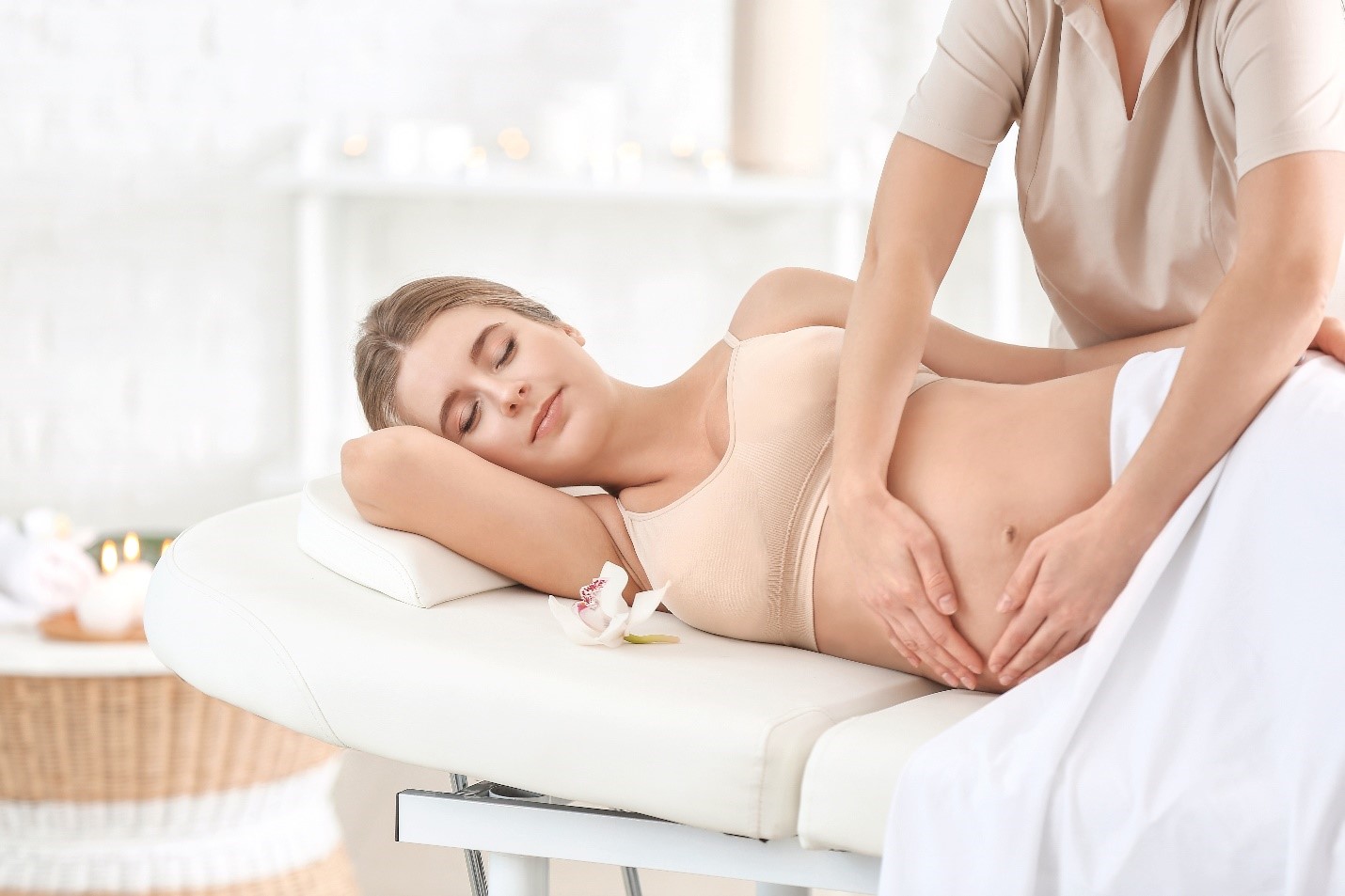Your vagina can expand to fit your baby during labour and shrink back to its original size after giving birth. The perineum (or pelvic floor) is the region between your vagina and rectum that extends, just like the vagina, after the child is born. However, it is slightly less elastic and prone to tearing during childbirth.
To reduce the likelihood of a difficult delivery and severe postpartum complications brought on by the rupture of the perineum, consider adding perineal massage to your list of things to do.
What Is Perineal Massage?
Perineal massage involves gentle, physical stretching of your pelvic floor to prepare the muscles and skin between your vagina and rectum for the delivery of your baby. Regular massage improves skin and muscle flexibility, which lowers the possibility of ripping and scarring after delivery.
Even though there isn’t any proof, many women firmly believe that perineal massage during the final month of pregnancy reduces pain and the chance of vaginal and perineal tears.
What Are the Benefits of Perineal Massage During Pregnancy?
During vaginal birth, between 40 and 80 per cent of women will have some degree of tearing, and approximately two-thirds of the tears will require stitches. Damage to the perineum can cause pelvic floor problems, such as uterine prolapse, faecal or urine incontinence, or sexual pain.
READ: 12 Simple Ways to Help Encourage Your Baby to Crawl
Six Benefits of Perineal Massage
1. Decreased Perineal Trauma
According to a study, 1 in 15 women who routinely receive perineal massage avoid an episiotomy (a perineal incision) or other rip requiring stitches.
Particularly for first-time mothers, perineal massage does lower your risk of a major tear during delivery. It reduces the possibility of perineal injuries requiring stitching in women who have never given birth vaginally.
2. More Likely to Avoid an Episiotomy
Perineal massage is effective because it lowers your chance of having an episiotomy. In the final four weeks of pregnancy, mothers who massage their perineum experience fewer episiotomies than other women. It occurs because the massage makes the perineum more elastic and prepares it to stretch when your baby is born.
Apollo Cradle Has the Best Team of Highly Qualified Gynaecologists
3. Make You Familiar with the Stretching and Burning Sensation
If this is your first child, you may feel a stinging and stretching sensation when massaging the perineum, which may resemble the feeling of labour and delivery of your child.
Perineal massage helps you become familiar and comfortable with the area before giving birth. It allows you to relax more during the pushing stage and breathe through this stinging sensation rather than rejecting it or tensing the area.
4. Less Perineal Pain Postpartum
Studies show women who regularly receive perineal massage during pregnancy have less pain three months after giving birth. Less perineal pain will help you heal more quickly and comfortably, allowing you to enjoy feeding your baby and spending time with them. The risk of painful sexual intercourse during the postpartum period can be lowered by less postpartum perineal pain.
5. Reduced Risk of Infection, Pain, and Bleeding
Avoiding stitches after delivery reduces your risk of developing an infection and experiencing excessive pain in your perineum following delivery. You’ll be less likely to experience significant bleeding and require stitches if your perineum has no tears after giving birth.
6. Reduced Risk of Postpartum Urinary Incontinence
Involuntary urine leakage after labour and pregnancy is known as postpartum urinary incontinence. In fact, it is a problem that affects about 50% of adult women and is caused by weakened pelvic and bladder muscles.
The likelihood of postpartum urine incontinence in new mothers is reduced due to perineal massage, which helps maintain the perineum even after giving birth.
READ: How to Set a Bedtime Routine for Your Baby
How Do You Do a Perineal Massage?
Doctors usually suggest starting massage once or twice a week between weeks 34 and 36 of your pregnancy. Depending on the woman’s body, several experts recommend repeating a massage every day or every other day, but sticking to twice a week works just as well.
You only need 5 minutes per session to reap the benefits regardless of how frequently you want to practice it. However, asking your doctor for suggestions on how frequently and when you should start receiving massages may enable you to reap better results at home.
Instructions for Trying a Perineal Massage at Home
- Thoroughly wash your hands and trim your nails if necessary.
- Lie back on a bed, your knees spread wide, and your legs bent in a comfortable position with your head supported.
- Put a few drops of coconut oil, olive oil, or any other vaginal lubricant on your thumb and perineum. Do not use mineral oil or Vaseline.
- Press your thumb into your vagina up to your first knuckle. You won’t be rubbing the entire vaginal wall, just the perineum.
- In your vagina, gently press lower toward your rectum.
- Keep applying pressure while you make a U-shaped movement with your thumb from left to right. There should only be a slight strain and minimal stinging or burning.
- Continue massaging for five minutes.
Who Should Not Perform Perineal Massage?
Although perineal massage can be safely performed at home, it is not recommended that you do so:
- Before 34 weeks pregnant
- If your cervix is small
- If you experienced bleeding throughout your second trimester of pregnancy
- If you are pregnant and have high blood pressure or an active vaginal infection
Perineal massage is a great method to add to your to-do list when preparing for delivery. Although it cannot guarantee desired outcomes, it can assist you in having a pain free delivery of your child without needing an episiotomy or stitches. However, please seek advice from a medical expert before massaging oneself.

